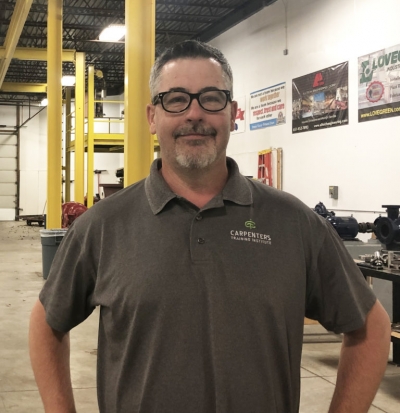Controlling Risk and Contamination
Safety is essential when working on any site, particularly occupied facilities. Taking the right precautions and controlling contamination protects not only the workers, but guests, customers, tenants, employees, and others against illness.
Ideally, construction work occurs during off-hours, but in many cases, construction must be done while a facility is fully operational. Due to the increased need for more standardized preparation and prevention at occupied facilities, the United Brotherhood of Carpenters (UBC) has developed the “Controlling Contaminants During Construction” manual, currently in limited release.

Three years ago, Dwayne Benson, Millwright Local 548 and L. J. Shosten Training Center instructor, was approached as a subject matter expert to help with a chapter of this new manual. One chapter turned into nine, and what was to take three-weeks actually took three-years. In that time, Dwayne travelled to the International Training Center in Las Vegas one week a month to work with others on researching, writing and editing. Their expertise and dedicated efforts resulted in more than 250 pages of instruction, including procedures, trade tips and interactive worksheets.
A collaboration of input from six subject matter experts, this manual provides comprehensive coverage on topics including: maintaining indoor air quality; barrier installation; food, beverage and pharmaceutical production facilities; food service facilities; occupied educational facilities; and hotel, retail and office facilities.
“Nothing like this has ever existed anywhere before now. And that was the challenge. There was no existing research out there. It was a lot of trial and error,” said Benson, who has been a Millwright and UBC member for the last 25 years, and a training instructor for the past five years.
“We have members working hotels that are constantly being remodeled, sections at a time, with guests in place. As trained professionals, we want to be as unobtrusive as possible and prevent anyone from getting sick. When working in a food and beverage facility, you want to protect the employees and the food line which is distributed to thousands and thousands of people. This book is centered around controlling contaminants to promote safety and prevent illness,” stated Benson.
Wide distribution and marketing of the manual is on the horizon, but it will first be used to train the trainers. In the meantime, Dwayne is still traveling one week a month to Las Vegas, working on the revision of ICRA training materials.
The preparation of the “Occupied Facilities: Controlling Contaminants During Construction” training manual would not have been possible without the technical contributions and cooperative efforts of individuals and groups associated with the United Brotherhood of Carpenters. The following individuals served as subject matter experts for this curriculum and the Training Programs they represent.
Dwayne Benson, Millwright Local 548, North Central States Regional Council of Carpenters, L. J. Shosten Training Center, Certified Welding Inspector
Jonathan Dunbar, Alaska Carpenters International Training Center
Susan Field, Carpenters International Training Center
Lawrence Hanson, CIP Concepts, Sanitation & Hygienic Design Specialist
Timothy Moriarty, Eastern Millwright Regional Council
Craig Ramey, Carpenters Training Committee for Northern California